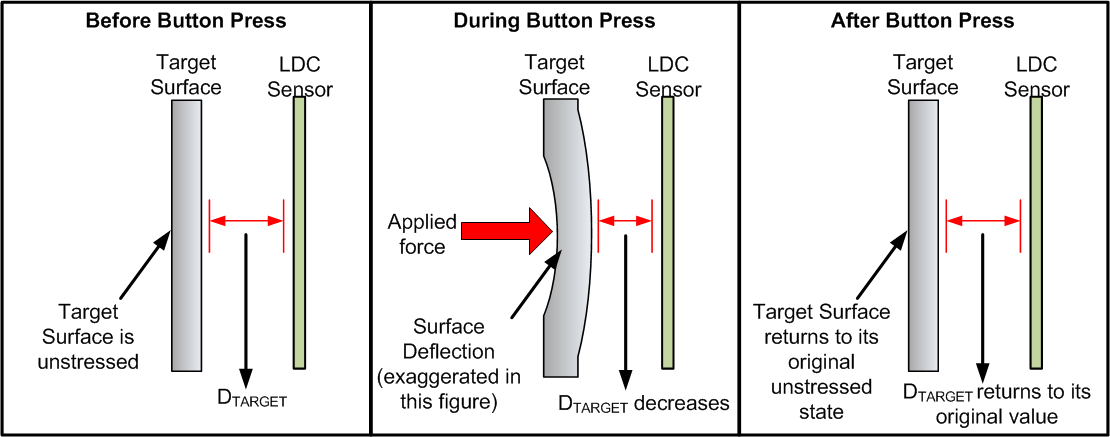SNOA963B February 2020 – July 2021 LDC2112 , LDC2114 , LDC3114 , LDC3114-Q1
1 Inductive Touch Buttons – The Working Principles
The three main components of the inductive touch button technology are the inductive sensor, target surface, and an inductance-to-digital converter. As shown in Figure 1-1 when a force is applied on the target surface, the material deflects slightly, reducing the distance between the inductive sensor and the target surface (DTARGET). This change in DTARGET changes the inductance of the sensor (Δ Sensor Inductance ∝ Δ DTARGET), which is measured by the inductance-to-digital converter. When the force is removed the surface returns to its original unstressed shape.
 Figure 1-1 Inductive Touch Components
Figure 1-1 Inductive Touch ComponentsThe primary factors that contribute to the sensitivity(1)of an inductive touch button are: